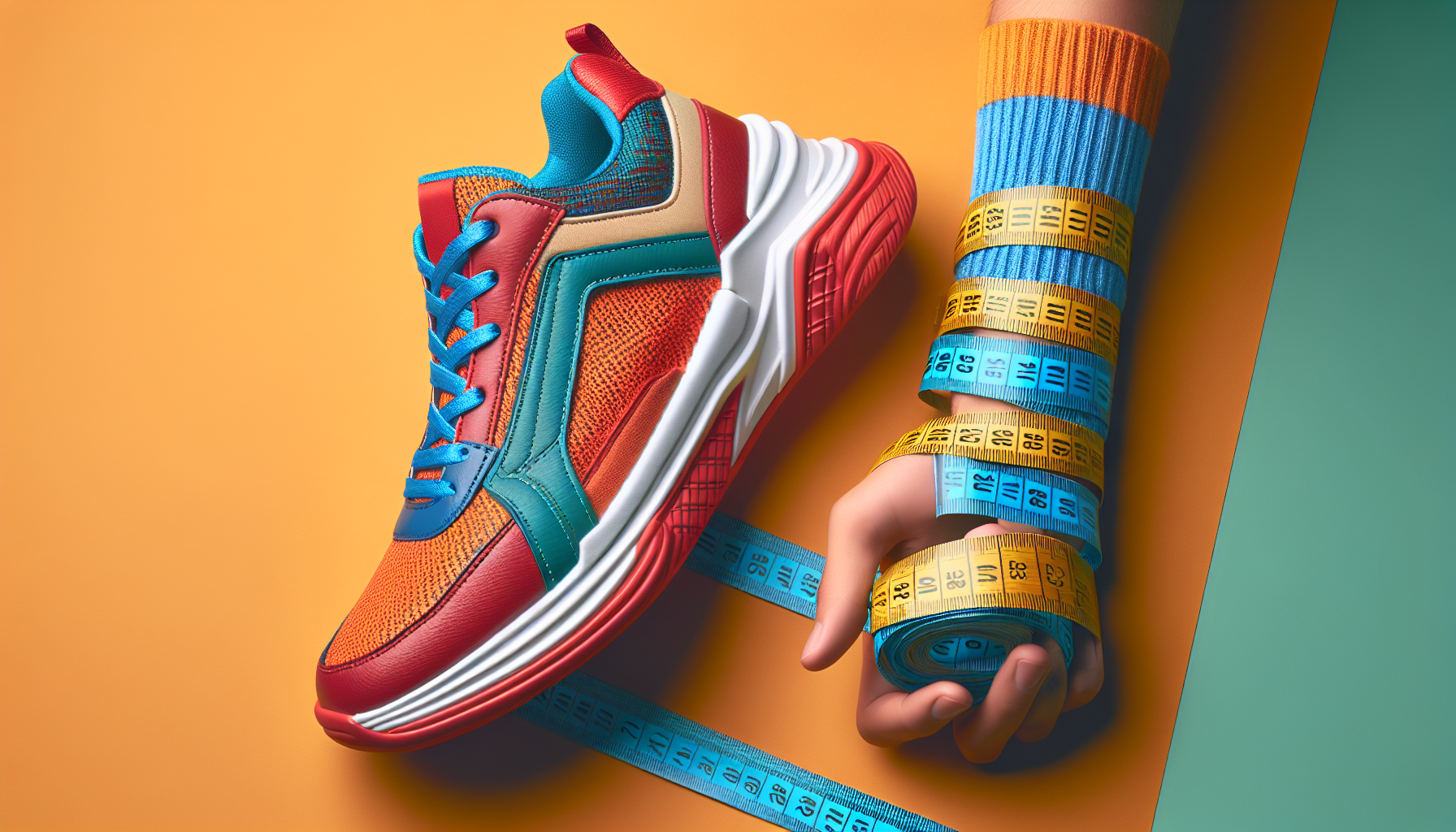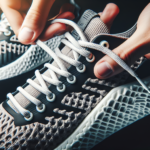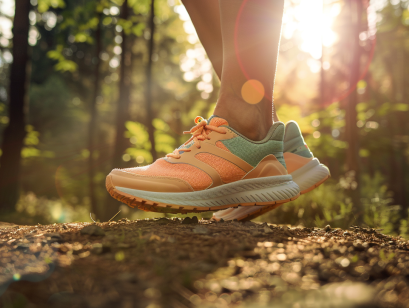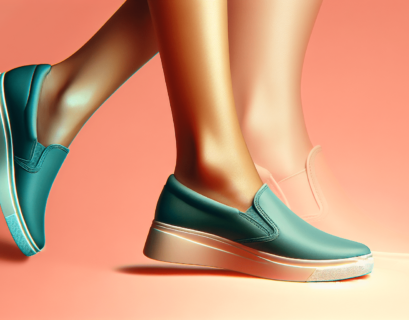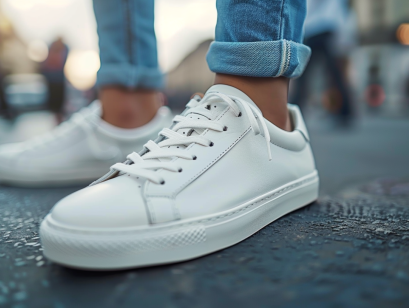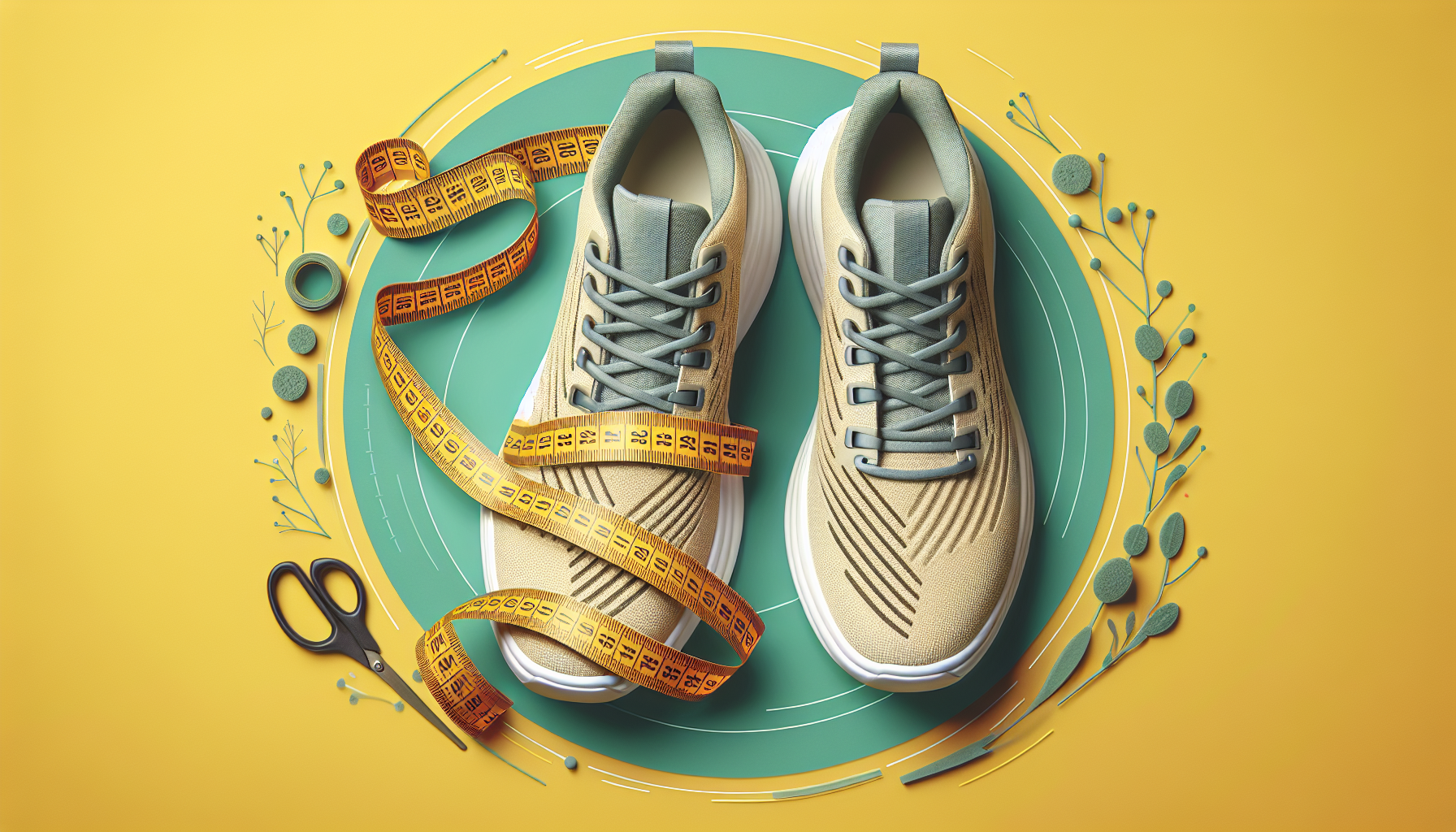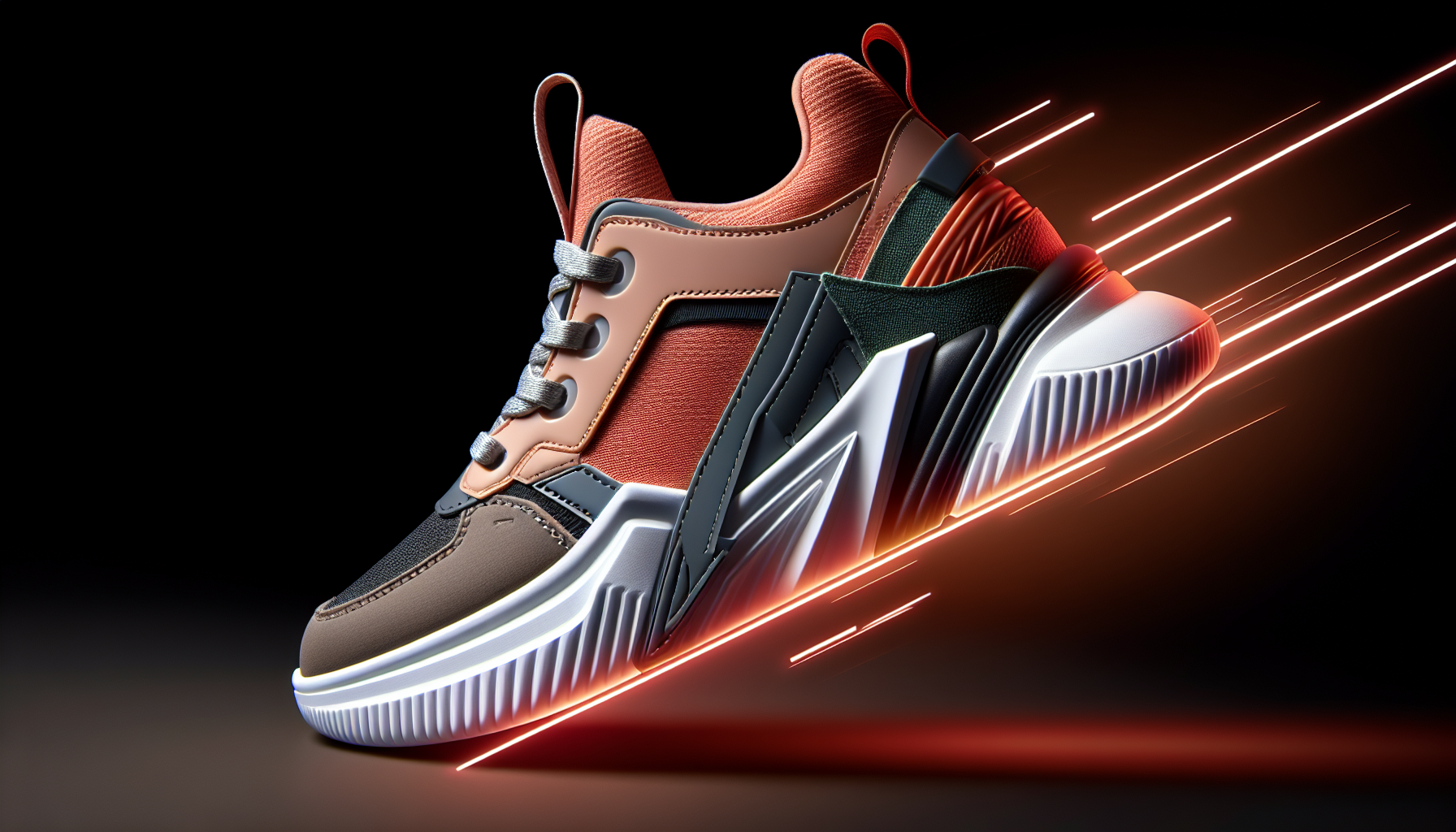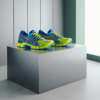Walking or running in uncomfortable sneakers can be a real pain, quite literally. But fear not, because in this article we have got you covered with some expert tips on how to choose the most comfortable sneakers for your feet. Whether you’re a fashion-forward sneakerhead or simply looking for the best support for your daily strolls, we’ll break down the key factors to consider when making this important decision. So lace up your shoes and let’s get started on the path to ultimate foot comfort!
Understanding Your Foot Type
Anatomy of the Foot
To choose the most comfortable sneakers for your feet, it is important to have a basic understanding of the anatomy of your foot. The foot is composed of different structures, including bones, ligaments, muscles, and tendons. These structures work together to provide support, stability, and mobility. By knowing the different parts of your foot, you can better understand the needs and characteristics of your specific foot type.
Identifying Your Arch Type
One key aspect of understanding your foot type is identifying your arch type. The arch of the foot refers to the curved portion on the inside of the foot, between the ball and the heel. There are three common types of arches:
- High arches: Feet with high arches have a noticeable curve, with only a small area connecting the ball of the foot to the heel.
- Neutral arches: Neutral arches have a moderate curve, with a clear arch that connects the ball of the foot to the heel.
- Flat feet: Flat feet have little to no arch, with the entire sole of the foot touching the ground.
By identifying your arch type, you can determine the level of support and cushioning your feet require.
Foot Measurements and Sizes
In addition to understanding your foot anatomy, it is essential to know your foot measurements and sizes. Shoe sizes can vary between brands, so relying solely on the number may not guarantee a proper fit. Measuring your feet accurately can help you find the right shoe size, ensuring optimal comfort. Measure both the length and width of your foot, as well as the circumference of your arch. These measurements will serve as a guide when choosing sneakers.
Importance of Correct Shoe Size
Problems with Wearing Wrong Shoe Sizes
Wearing the wrong shoe size can lead to a multitude of problems and discomfort. If your shoes are too small, they can cause blisters, corns, and calluses due to friction and pressure. On the other hand, oversized shoes can lead to foot instability, which can result in sprains or other injuries. Wearing ill-fitting shoes can even affect your posture and overall body alignment, leading to pain and discomfort in your feet, ankles, knees, hips, and back.
How to Measure Your Shoe Size
To ensure you are wearing the correct shoe size, it is crucial to measure your feet accurately. Start by standing on a piece of paper and tracing the outline of both feet. Measure the length from the heel to the tip of your longest toe and the width at the widest part of your foot. Compare these measurements to a shoe size chart to determine your correct size. It is recommended to measure your feet regularly, as foot size can change over time due to factors such as weight fluctuations, pregnancy, and aging.
Interpreting Shoe Size Charts
Shoe size charts provide a reference for the length and width measurements of different shoe sizes. However, it is important to note that each brand may have slight variations in their sizing. When interpreting shoe size charts, consider both the length and width measurements to find the best-fitting shoe. Additionally, pay attention to any specific recommendations or sizing guides provided by the brand to ensure the most accurate fit.
Considering Your Lifestyle and Activity Level
Footwear for Active Lifestyles
If you lead an active lifestyle and engage in activities such as running, hiking, or playing sports, it is crucial to choose sneakers that provide adequate support, stability, and cushioning. Look for sneakers with features like reinforced soles, shock-absorbing midsoles, and durable outsoles. Opt for shoes specifically designed for your chosen activity, as they often have features tailored to provide the necessary support and protection for that particular sport or activity.
Footwear for Leisure or Casual Wear
For leisure or casual wear, comfort and style are equally important. Choose sneakers that offer cushioning and support while reflecting your personal style. Look for sneakers with breathable materials and flexible soles that allow your feet to move naturally. Consider factors such as the type of closure (laces, Velcro, or slip-on) and the overall design of the shoe to find a pair that suits your preferences.
Adjusting Shoe Choices According to Activity Level
It is essential to adjust your shoe choices depending on your activity level. If you engage in high-impact activities, prioritize sneakers with excellent shock absorption and stability features. On the other hand, for low-impact activities or casual wear, you can opt for sneakers with a more flexible and lightweight construction. By selecting appropriate footwear for each activity, you can enhance your comfort and reduce the risk of foot and leg injuries.
Choosing Sneakers based on Foot Conditions
Sneakers for Flat Feet
Individuals with flat feet have a tendency to overpronate, which means their feet roll inward excessively when walking or running. To address this, choose sneakers with excellent arch support to provide stability and prevent excessive inward rolling. Look for shoes labeled as “motion control” or “stability” to help support the arch and maintain proper foot alignment. Additionally, consider sneakers with added cushioning to absorb shock and reduce the risk of discomfort or pain.
Sneakers for High Arched Feet
People with high arches often require sneakers with enhanced cushioning to compensate for the lack of natural shock absorption. Look for shoes with ample arch support and cushioning in the heel and midsole areas. Sneakers labeled as “neutral” or “cushioned” are typically suitable for high-arched feet. Choosing sneakers that provide adequate cushioning and support can help distribute weight evenly, reducing the strain on the arches and promoting overall comfort.
Sneakers for Feet with Bunions
Bunions are bony bumps that develop on the joint at the base of the big toe, causing the toe to lean inward and potentially causing discomfort. When selecting sneakers for feet with bunions, choose footwear with a wide toe box to accommodate the width of the forefoot and reduce pressure on the affected area. Look for sneakers made from soft and stretchable materials that can provide a comfortable and forgiving fit.
Material and Construction of Sneakers
Breathable Materials for Comfort
Choosing sneakers made from breathable materials can significantly enhance comfort, especially during physical activities. Breathable materials, such as mesh or knit uppers, allow air circulation, preventing excessive sweating and reducing the risk of fungal infections. Additionally, breathable materials help regulate temperature inside the shoe, keeping your feet cool and dry.
Understanding Sneaker Construction and Durability
The construction of sneakers plays a crucial role in their comfort and durability. Look for sneakers with sturdy construction, including reinforced stitching, durable outsoles, and supportive midsoles. Quality construction ensures that the sneakers can withstand regular wear and tear, providing long-lasting comfort and performance.
Impact of Material on Comfort and Breathability
The choice of materials used in sneakers can significantly impact their overall comfort and breathability. Synthetic materials, such as nylon or polyester, are lightweight and often offer excellent breathability. Natural materials, such as leather or suede, provide more durability and structure but may be less breathable. Consider your personal preferences and the specific needs of your feet when choosing the material of your sneakers.
Considering Cushioning and Support
Importance of Good Cushioning
Cushioning is vital in providing impact absorption and reducing the strain on your feet and joints. Look for sneakers with cushioned midsoles, which can help distribute the load evenly and minimize the risk of discomfort or fatigue. Consider the type of cushioning used, such as air, gel, foam, or a combination, to find the level of cushion that suits your needs.
Understanding Arch Support
Arch support is necessary to maintain proper foot alignment and prevent overpronation or supination. Select sneakers that offer adequate arch support based on the needs of your foot type. Customizable orthotic inserts or specialized insoles can also provide additional arch support for individuals with specific foot conditions or preferences.
Choosing the Right Amount of Cushioning and Support
Finding the right balance of cushioning and support is essential for optimal comfort. Too much cushioning without sufficient support can lead to instability and potential injuries. Conversely, excessive support without proper cushioning can cause discomfort or pressure points. Experiment with different models and brands to find the sneakers that offer the right combination of cushioning and support for your feet.
Understanding Sneaker Style and Design
Athletic Sneakers
Athletic sneakers are specifically designed for sports and physical activities. They often feature performance-enhancing elements such as advanced cushioning, supportive soles, and traction for different terrains. Athletic sneakers come in various styles, including running shoes, basketball shoes, and cross-trainers. Choose a style that aligns with your specific activity and offers the necessary features for optimal performance and comfort.
Lifestyle Sneakers
Lifestyle sneakers, also known as casual sneakers, are designed primarily for everyday wear. They prioritize comfort and style, making them suitable for various occasions. Lifestyle sneakers come in a wide range of designs, colors, and materials, allowing you to express your personal style while enjoying optimal comfort. Consider factors such as the type of closure, the silhouette, and the overall aesthetic when choosing lifestyle sneakers.
Choosing Sneaker Designs that Combine Comfort and Style
When selecting sneakers, aim for a design that combines both comfort and style. Look for features such as supportive cushioning, breathable materials, and a secure fit. Additionally, consider your personal style preferences and choose a design that reflects your taste. By finding sneakers that offer both comfort and style, you can enjoy the best of both worlds.
Trying On and Testing Sneakers
The Right Time to Try on Shoes
It is recommended to try on shoes later in the day or after any physical activity. Feet tend to swell throughout the day, and this swelling can affect the fit of the shoes. By trying on shoes when your feet are at their largest, you can ensure a more accurate fit.
Test Walking and Running
When trying on sneakers, it is essential to test them by walking and running. Take your time to assess how the shoes feel during different movements. Pay attention to any areas of discomfort, such as rubbing or pinching. Walk or run in various speeds and directions to determine how well the sneakers support your feet and provide the desired level of comfort.
Assessing Sneaker Fit and Comfort
During the fitting process, consider factors such as the length and width of the shoe, as well as the overall feel. The shoe should provide ample room for your toes to move freely, without feeling too tight or too loose. Additionally, the heel should fit snugly without slipping or rubbing. Take the time to assess the overall comfort of the sneakers and trust your instincts when deciding on the best fit for you.
Caring for Your Sneakers
Cleaning and Maintaining Your Sneakers
Proper care and maintenance can significantly extend the lifespan of your sneakers. Follow the manufacturer’s instructions for cleaning, which may involve handwashing or using a gentle machine cycle. Avoid using harsh chemicals that can damage the materials. Allow your sneakers to air dry after cleaning, rather than using high heat sources. Regularly remove any dirt or debris to keep your sneakers looking fresh.
Knowing When to Replace Your Shoes
While sneakers can be durable, they eventually wear out over time. The lifespan of sneakers depends on factors such as frequency of use, activity level, and the type of terrain they are exposed to. Inspect your sneakers regularly for signs of excessive wear and tear, such as worn-out outsoles, flattened cushioning, or visible damage to the upper. When the integrity of the shoe is compromised, it is time to replace them to maintain optimal comfort and support.
How Proper Care Can Extend Sneaker Lifespan
Taking proper care of your sneakers can significantly extend their lifespan. Regular cleaning and maintenance help prevent the buildup of dirt, grime, and odors, which can break down the shoe materials over time. Storing your sneakers in a cool, dry place, away from direct sunlight, can also help preserve their integrity. By investing time in caring for your sneakers, you can ensure they remain comfortable and supportive for an extended period.
Final Thoughts on Choosing Sneakers
Consideration of Price vs. Quality
When choosing sneakers, it is important to strike a balance between price and quality. While high-quality sneakers may come with a higher price tag, they often offer better comfort, durability, and support. Investing in a well-made pair of sneakers can ultimately save you money in the long run by reducing the risk of discomfort, injuries, and frequent replacements.
Importance of Personal Comfort
Personal comfort should always be the top priority when selecting sneakers. Each individual’s feet are unique, and what works for one person may not work for another. Take the time to understand your own foot type, needs, and preferences. Trying on different styles and brands can help you find the sneakers that provide the highest level of comfort for your specific feet.
Recap of Choosing Comfortable Sneakers
Choosing the most comfortable sneakers for your feet involves a combination of factors. Understanding your foot type, measuring your feet accurately, considering your lifestyle and activity level, and selecting appropriate support and cushion are all essential elements. Additionally, paying attention to sneaker style, fit, construction, and care can also contribute to the overall comfort and longevity of your sneakers. Keep these tips in mind as you embark on your journey to find the perfect pair of sneakers that will keep your feet happy and healthy. Happy shoe shopping!

